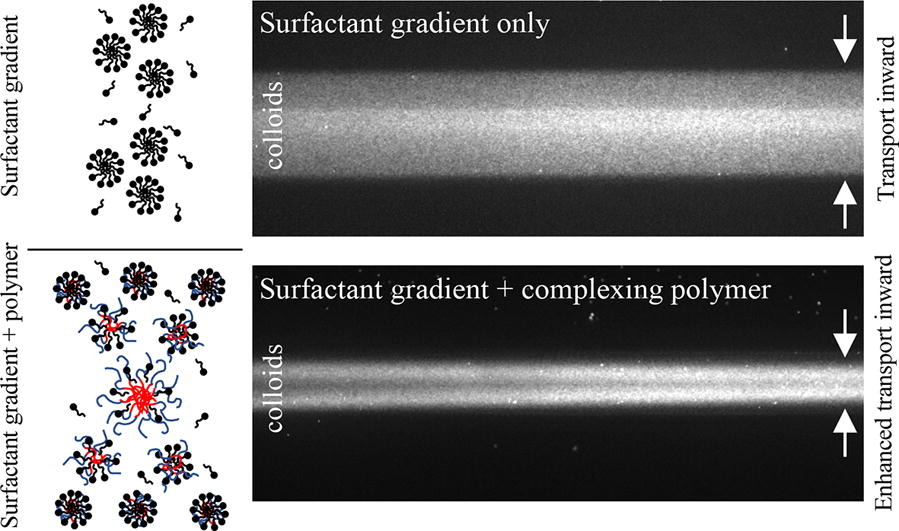Better transport on the way to more sustainable product formulations
Lauren Smith
Apr 27, 2023

Graphical abstract from “Effect of polymer/surfactant complexation on diffusiophoresis of colloids in surfactant concentration gradients,” Journal of Colloid and Interface Science 642 (2023) 169–181
Reformulating products to use more biodegradable materials or ingredients that have a lower carbon footprint takes more than simple substitutions. Researchers at Carnegie Mellon University are advancing the understanding of how ingredients interact and developing new strategies for reformulating products.
A product formulation is specifically designed to control the interactions between all the ingredients. Think of the ingredients list on a shampoo bottle; that's a lot of potential interactions. "If we can understand the consequences of these subtle interactions in these complicated materials," says Robert Tilton, "we're gearing up for developing new strategies for formulating products that are more sustainable, while achieving the same or better performance."
We’re gearing up for developing new strategies for formulating products that are more sustainable.
Robert Tilton, Chevron Professor, Chemical Engineering
Tilton, Chevron professor of chemical engineering, and his colleagues Steve Garoff, emeritus professor of physics, and Aditya Khair, professor of chemical engineering, have published a new paper in the Journal of Colloid and Interface Science. They show that polymer/surfactant complexes significantly enhance diffusiophoretic transport of colloids.
Diffusiophoresis is a way to move colloidal particles in a fluid, driven by a concentration gradient of a different substance. Colloidal particles are big compared to molecules and don't diffuse very quickly. The imposed gradient provides the energy needed to move the colloids in the fluid.
Diffusiophoresis is understood well in pristine environments. Tilton's research group is investigating how this transport phenomenon works in complex fluids.
Although diffusiophoresis has many potential industrial applications, most research studies have focused on materials that aren't as critical to the performance of industrial formulations. "If we want to be able to use this transport phenomenon in industry, we need to study it in material systems that come up the most in industry," says Angela Yang, a Ph.D. student advised by Tilton and the lead author on the paper.
Tilton wanted to know how polymers would affect diffusiophoresis driven by surfactants, especially in multicomponent formulated systems where they interact strongly with large polymer molecules in solution. Surfactants, commonly thought of as detergent ingredients, reduce the surface tension of the liquid in which they are dissolved. Surfactant/polymer complexes are common in commercial product formulations. Tilton and Yang showed that these complexes can significantly enhance diffusiophoresis.
"The motivation of the paper was to see if a well-known transport phenomenon could be driven in more industrially relevant systems," says Yang. "It was a bonus that these more complex material systems led to even greater transport."
For media inquiries, please contact Lauren Smith at lsmith2@andrew.cmu.edu.
